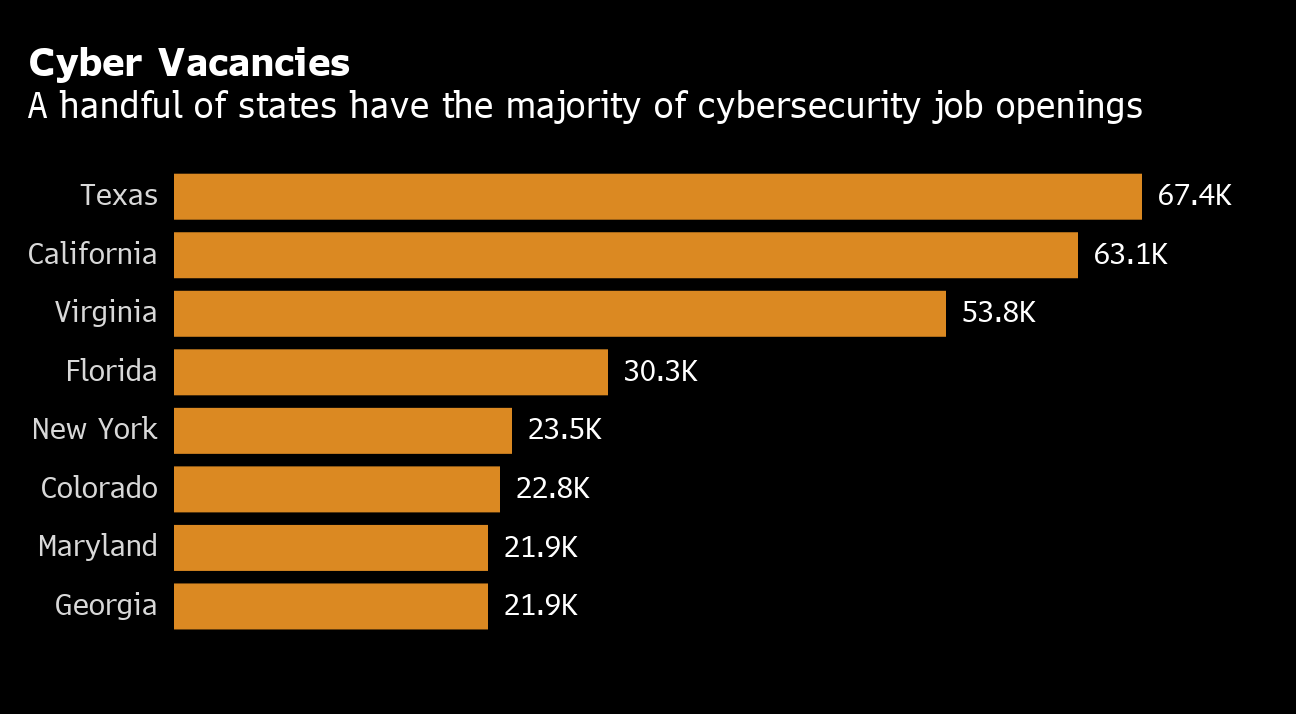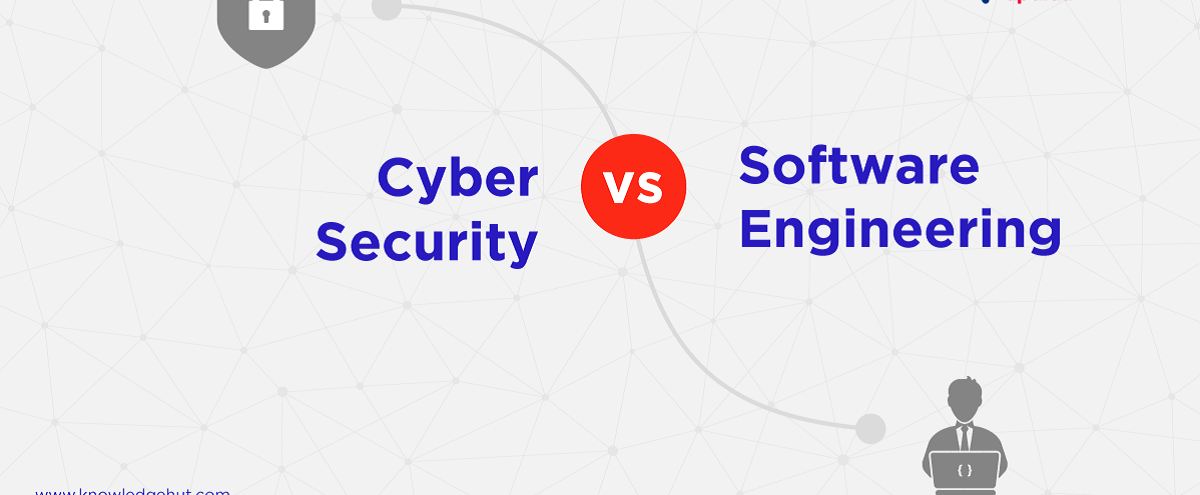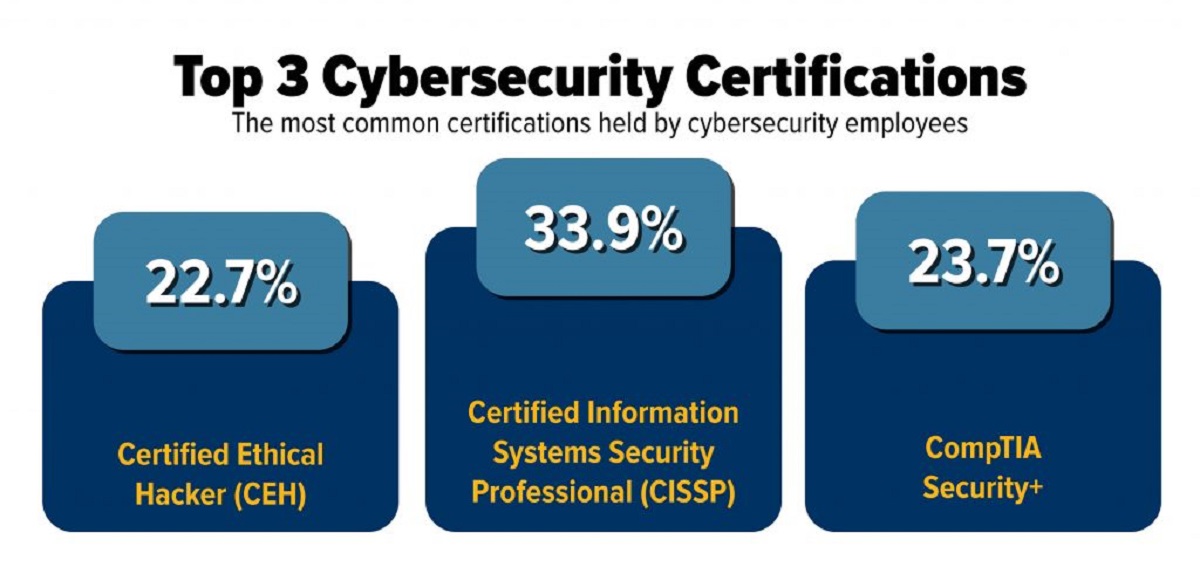Introduction
The field of cybersecurity plays a crucial role in safeguarding sensitive information and defending against cyber threats. As technology continues to advance, the demand for skilled cybersecurity professionals is at an all-time high. However, the job market is struggling to keep up with the growing need for cybersecurity experts, resulting in a significant skills gap that poses serious challenges to organizations and industries worldwide.
In today’s interconnected world, where data breaches and cyber-attacks have become commonplace, the importance of a robust cybersecurity workforce cannot be overstated. Organizations across various sectors, including healthcare, finance, and government, face the constant challenge of detecting and mitigating cyber threats. Yet, finding qualified professionals to fill these critical roles remains a daunting task.
The cybersecurity skills gap refers to the disparity between the demand for skilled cybersecurity professionals and the available talent pool. It stems from a combination of factors, including the rapid advancement of technology, evolving cyber threats, and a lack of investment in cybersecurity education and training programs. As a result, the number of unfilled cybersecurity jobs continues to rise steadily, leaving organizations vulnerable to cyber-attacks and compromising the integrity of sensitive data and systems.
Furthermore, the impact of unfilled cybersecurity jobs extends far beyond individual organizations. In a digital ecosystem where interconnectedness is the norm, a weak link in one organization’s cybersecurity can have far-reaching consequences. A successful cyber-attack on a critical infrastructure or a government agency can paralyze operations, disrupt economies, compromise national security, and put lives at risk.
Understanding the scale of the cybersecurity skills gap is crucial in addressing this pressing issue. By quantifying the number of unfilled cybersecurity jobs, we can gain insight into the magnitude of the problem and assess the future outlook for the availability of skilled cybersecurity professionals. Only with this knowledge can we develop effective strategies to bridge the gap and secure our digital landscape.
What is the current state of the cybersecurity job market?
The cybersecurity job market is experiencing tremendous growth and offers promising opportunities for individuals looking to enter or advance their careers in the field. As the digital landscape becomes increasingly complex, the demand for cybersecurity professionals continues to outpace the available talent pool.
According to industry reports, the cybersecurity job market is projected to grow at an exponential rate in the coming years. This growth is driven by several factors, including the rise in cyber threats, the increasing digitization of businesses, and the growing need for stricter data privacy regulations. As a result, organizations are prioritizing the recruitment of cybersecurity experts to protect their networks, systems, and sensitive data from malicious actors.
Another factor contributing to the surge in cybersecurity job opportunities is the evolving nature of cyber threats. Cybercriminals are constantly finding new ways to exploit vulnerabilities in networks and systems, requiring organizations to stay one step ahead by employing skilled cybersecurity professionals. This demand spans across various industries, including finance, healthcare, e-commerce, and government sectors, as each sector faces unique cybersecurity challenges and compliance requirements.
Additionally, the COVID-19 pandemic has accelerated the digital transformation efforts of many organizations, leading to an increased reliance on online platforms, remote work, and cloud-based solutions. The rapid shift to a digital-first approach has highlighted the critical need for robust cybersecurity measures, further driving the demand for cybersecurity professionals.
Despite the unprecedented growth in cybersecurity job opportunities, the talent pool is struggling to keep up with the demand. The skills shortage in the industry is a significant challenge for hiring managers, as they struggle to find qualified candidates with the necessary expertise and experience. This imbalance creates a highly competitive job market, with organizations offering attractive compensation packages and benefits to attract and retain top cybersecurity talent.
In summary, the current state of the cybersecurity job market can be described as highly dynamic and in continuous expansion. The growing threat landscape, digital transformation efforts, and increasing regulatory requirements have fueled the demand for skilled cybersecurity professionals. However, the shortage of qualified individuals poses a significant challenge and highlights the pressing need for investment in cybersecurity education, training programs, and talent development initiatives.
Factors contributing to the cybersecurity skills gap
The cybersecurity skills gap is a complex issue influenced by various factors that collectively contribute to the growing disparity between the demand for skilled cybersecurity professionals and the available talent pool. Understanding these factors is crucial in addressing the skills gap and developing effective strategies to bridge it. Here are some key factors that contribute to the cybersecurity skills gap:
- Rapidly evolving technology: The continuous advancement of technology presents a constant challenge for cybersecurity professionals. New technologies such as cloud computing, artificial intelligence, and the Internet of Things (IoT) introduce new vulnerabilities and attack vectors that require specialized knowledge and skills to mitigate. Keeping up with these technological advancements requires ongoing education and professional development.
- Increase in cyber threats: The prevalence and sophistication of cyber threats have significantly increased in recent years. Cybercriminals are constantly developing new attack techniques, malware, and methods to exploit vulnerabilities. As a result, cybersecurity professionals need to stay updated with the latest threat landscape, techniques, and tools to effectively prevent and respond to cyber-attacks.
- Lack of cybersecurity education and training: The shortage of formal cybersecurity education and training programs is a significant contributing factor to the skills gap. While there has been an increase in cybersecurity-related degree programs and certifications, they are not yet sufficient to meet the demand. Additionally, the rapid pace of technological advancements often renders traditional educational programs outdated, emphasizing the need for continuous learning and practical hands-on experience.
- Inadequate cybersecurity talent pipeline: The limited pipeline of cybersecurity talent is a major challenge. Many students and young professionals are not aware of the diverse career opportunities in cybersecurity or the skills and qualifications required to enter the field. Encouraging and promoting cybersecurity as a viable career option from an early stage is essential to increase the talent pool.
- Gender and diversity gap: The cybersecurity industry faces a significant gender and diversity gap. Women and individuals from underrepresented communities are often underrepresented in the field, further limiting the pool of potential cybersecurity professionals. Efforts to promote diversity and inclusivity in the industry are crucial to address this gap and bring diverse perspectives and skill sets to cybersecurity teams.
These factors collectively contribute to the cybersecurity skills gap and highlight the need for comprehensive solutions. Addressing the skills gap requires collaboration between academia, industry, and government to develop effective educational programs, increase awareness, and attract more diverse talent to the cybersecurity field. Additionally, organizations must invest in ongoing training and professional development to upskill existing employees and stay ahead of the evolving cybersecurity landscape.
The impact of unfilled cybersecurity jobs
The increasing number of unfilled cybersecurity jobs has far-reaching consequences that impact organizations, industries, and society as a whole. Understanding the impact of these vacancies is crucial in recognizing the urgency of addressing the cybersecurity skills gap. Here are some key impacts of unfilled cybersecurity jobs:
- Increased vulnerability to cyber-attacks: Organizations with unfilled cybersecurity positions are more susceptible to cyber-attacks. A lack of skilled professionals means there may be gaps in threat detection, incident response, and vulnerability management. Cybercriminals exploit these weaknesses, compromising sensitive data, disrupting operations, and causing financial losses.
- Higher risk of data breaches: Inadequate cybersecurity staffing can lead to an increased risk of data breaches. Without adequate personnel to monitor and secure networks and systems, organizations may struggle to identify and address vulnerabilities. This exposes them to potential data breaches that can result in reputational damage, legal consequences, and financial losses.
- Difficulty in meeting regulatory compliance: Many industries are subject to stringent data protection and privacy regulations. Unfilled cybersecurity positions make it challenging for organizations to implement proper security controls and meet compliance requirements. This can lead to penalties, legal action, and a loss of trust from customers and stakeholders.
- Operational disruptions: Cybersecurity incidents can cause significant operational disruptions. Without enough cybersecurity professionals to mitigate and respond to threats, organizations may experience prolonged downtime, interrupted services, and financial repercussions. This can impact productivity, customer satisfaction, and overall business operations.
- Reduced innovation and growth: The cybersecurity skills gap hampers innovation and growth. Organizations unable to effectively protect their digital assets may shy away from implementing new technologies or embracing digital transformation initiatives. This cautious approach can hinder competitiveness, limit market expansion, and stifle overall industry progress.
The impact of unfilled cybersecurity jobs extends beyond individual organizations and industries. In an interconnected digital ecosystem, a single weak link can have cascading effects. A successful cyber-attack on critical infrastructure, governmental agencies, or healthcare systems can compromise national security, disrupt services, and put lives at risk. Closing the cybersecurity skills gap becomes a collective responsibility to ensure a safer and more resilient digital environment.
How many unfilled cybersecurity jobs are there?
The exact number of unfilled cybersecurity jobs is difficult to determine due to various factors, including the dynamic nature of the job market, regional variations, and differing methodologies for tracking job vacancies. However, multiple reports and studies provide insights into the scale of the cybersecurity skills gap, pointing to a significant shortage of qualified professionals. Here are some key findings:
- Global shortage: The global shortage of cybersecurity professionals is estimated to be in the millions. According to a report by (ISC)², a renowned cybersecurity certification body, the cybersecurity workforce would need to grow by 89% to meet the increasing demand for skilled professionals worldwide.
- Regional variations: The shortage of cybersecurity professionals varies across regions. For example, North America is estimated to have the highest demand for cybersecurity professionals, followed by Europe and Asia. However, each region faces its own unique challenges and requirements.
- Job growth: The demand for cybersecurity professionals is rapidly outpacing the growth of the overall job market. According to the U.S. Bureau of Labor Statistics, employment of information security analysts (a role within the cybersecurity field) is projected to grow 31% from 2019 to 2029, much faster than the average for all occupations.
- Industry-specific shortages: Certain industries face particularly acute shortages of cybersecurity professionals. For example, the healthcare sector faces challenges in recruiting and retaining skilled cybersecurity staff due to the sensitive nature of medical data and stringent compliance requirements.
- Skills-specific shortages: In addition to the overall shortage, there is also a lack of professionals with specific cybersecurity skills. Specialized areas such as penetration testing, incident response, and cloud security often face particularly intense competition for qualified candidates.
While the exact number of unfilled cybersecurity jobs may be challenging to pinpoint, it is evident that there is a substantial shortage of skilled professionals. This shortage poses significant risks and challenges for organizations seeking to bolster their cybersecurity defenses and protect sensitive data. Addressing the skills gap requires collaborative efforts between academia, industry, and government to invest in cybersecurity education, training programs, and initiatives that attract and nurture a diverse pool of talent.
The future outlook for cybersecurity job openings
The future outlook for cybersecurity job openings remains highly promising, with a significant increase in demand anticipated in the coming years. As the digital landscape continues to evolve and cyber threats become more sophisticated, organizations recognize the critical need for skilled cybersecurity professionals to protect their assets and safeguard sensitive data. Here are some key factors shaping the future outlook for cybersecurity job openings:
- Continued growth in demand: The demand for cybersecurity professionals is projected to grow exponentially as our reliance on technology deepens. The increasing digitization of businesses, the proliferation of connected devices, and the rise in cyber threats are all driving factors behind this growth. Organizations will require a larger workforce of cybersecurity experts to address emerging challenges and protect against ever-evolving threats.
- Emerging technologies: The evolution of technology introduces new threats and vulnerabilities. As emerging technologies like artificial intelligence, machine learning, and the Internet of Things (IoT) become more prevalent, the need for specialized cybersecurity expertise to secure these technologies will rise. Professionals with knowledge and skills in securing these cutting-edge technological platforms will be in high demand.
- Regulatory compliance: Governments and regulatory bodies across the globe are increasingly recognizing the importance of cybersecurity and implementing stricter data protection and privacy regulations. Compliance with these regulations requires organizations to strengthen their cybersecurity posture, leading to a heightened demand for professionals well-versed in regulatory compliance and data privacy laws.
- Industry-specific requirements: Different industries have unique cybersecurity challenges and requirements. Sectors such as finance, healthcare, and government consistently face high levels of cyber threats and are subject to stringent compliance standards. As a result, they will continue to require specialized cybersecurity professionals with industry-specific knowledge and expertise.
- Job diversification: The field of cybersecurity offers a wide range of career paths and specializations. As organizations recognize the multidimensional nature of cybersecurity, they will seek experts in areas such as threat intelligence, cloud security, incident response, risk management, and more. This diversification presents opportunities for professionals to specialize in specific domains and acquire sought-after skills in the job market.
Given the continuous expansion of the digital world and the increasing sophistication of cyber threats, the future outlook for cybersecurity job openings remains exceptionally optimistic. Individuals pursuing a career in cybersecurity can expect a wealth of opportunities across various industries and regions. To capitalize on this growing demand, continuous learning, professional development, and staying current with industry trends will be crucial for aspiring and existing cybersecurity professionals.
Consequences of the cybersecurity skills shortage
The cybersecurity skills shortage has wide-ranging consequences that impact organizations, economies, and even individuals. The shortage of qualified professionals in the cybersecurity field poses significant challenges and leaves various entities vulnerable to cyber threats. Here are some key consequences of the cybersecurity skills shortage:
- Increased cyber risks: The lack of skilled cybersecurity professionals leaves organizations exposed to a higher risk of cyber-attacks. Without adequate expertise, organizations may struggle to implement robust security measures, detect vulnerabilities, and respond effectively to incidents. This increases the likelihood of successful cyber-attacks, data breaches, and financial losses.
- High cost of cyber-attacks: Cyber-attacks can result in significant financial losses for organizations. The cybersecurity skills shortage exacerbates this issue as the costs associated with recovering from an attack, such as remediation, legal fees, regulatory fines, and reputational damage, can be substantial. The inability to address these risks due to the skills gap can have long-lasting financial implications.
- Loss of trust and reputation: Organizations failing to adequately protect their systems and data face a loss of trust from their customers, clients, and partners. Data breaches and successful cyber-attacks can damage an organization’s reputation, making it challenging to recover the trust once lost. This loss of reputation can have a lasting impact on an organization’s ability to attract customers and secure business relationships.
- Stifled innovation and growth: The shortage of cybersecurity professionals can hinder innovation and growth. Organizations may be hesitant to adopt new technologies or explore digital transformation initiatives due to concerns about the potential security risks. This cautious approach can limit a company’s ability to compete, innovate, and capitalize on new opportunities.
- Inadequate response to incidents: When a cyber incident occurs, a swift and effective response is crucial to minimize the impact. The skills shortage jeopardizes the ability of organizations to respond adequately to incidents, potentially prolonging the duration and impact of an attack. This delay can result in increased damage to systems, data, and overall business continuity.
The consequences of the cybersecurity skills shortage extend beyond individual organizations. The collective impact of numerous organizations struggling to address cyber risks affects economies as a whole. The costs associated with cybercrime escalate, consumer trust erodes, and governments are tasked with implementing stricter regulations to protect public and national interests. Closing the skills gap and fostering a strong cybersecurity workforce is crucial to mitigate these consequences and ensure a secure digital environment for all.
Steps to address the cybersecurity skills gap
Addressing the cybersecurity skills gap requires a comprehensive and collaborative approach involving various stakeholders, including academia, industry, government, and individuals. By taking proactive measures, we can bridge the gap and cultivate a strong and resilient cybersecurity workforce. Here are some key steps to address the cybersecurity skills gap:
- Enhance education and training: Invest in cybersecurity education and training programs to develop a pipeline of skilled professionals. This includes establishing cybersecurity-focused degree programs, vocational training, and certification opportunities. Collaboration between educational institutions and industry partners can ensure that curriculum aligns with real-world industry requirements.
- Promote cybersecurity as a career choice: Increase awareness about the diverse and rewarding career opportunities in cybersecurity. Encourage students, particularly those from underrepresented communities, to pursue careers in cybersecurity through outreach programs, scholarship opportunities, and mentorship initiatives. By promoting diversity and inclusivity, we can tap into a broader talent pool and bring fresh perspectives to the field.
- Invest in professional development: Encourage organizations to invest in continuous professional development for existing cybersecurity professionals. Provide opportunities for upskilling and reskilling through workshops, seminars, and training programs. This ensures that professionals stay updated with the latest technologies, threats, and best practices.
- Expand public-private partnerships: Foster collaboration between government agencies, businesses, and educational institutions to address the skills gap. Public-private partnerships can facilitate knowledge sharing, develop tailored training programs, and support initiatives that promote cybersecurity education and career development.
- Mentorship and apprenticeship programs: Establish mentorship and apprenticeship programs that connect experienced cybersecurity professionals with novices. This hands-on learning approach allows individuals to gain practical experience and knowledge under the guidance of seasoned experts, accelerating their skills development.
- Encourage cross-disciplinary collaboration: Foster collaboration between different disciplines, such as computer science, engineering, and law, to develop well-rounded cybersecurity professionals. Cybersecurity is multidimensional, and professionals with diverse backgrounds can bring valuable insights and expertise to tackle complex challenges.
- Support research and innovation: Encourage research and innovation in the cybersecurity field to drive advancements and stay ahead of emerging threats. Organizations can collaborate with academic institutions to fund research projects and provide opportunities for students and researchers to explore cutting-edge technologies and solutions.
- Industry-academic partnerships: Foster partnerships between industry and academic institutions to bridge the gap between theoretical knowledge and practical skills. Encourage internships, co-op programs, and industry-sponsored research projects that provide students with real-world experience and exposure to industry practices.
- Government support: Governments should promote initiatives that incentivize organizations to invest in cybersecurity training, education, and workforce development. This includes offering tax incentives, grants, and funding opportunities to support cybersecurity initiatives at various levels.
By implementing these steps, we can begin to address the cybersecurity skills gap and cultivate a robust cybersecurity workforce. It requires a collective effort from all stakeholders to ensure that organizations and individuals have access to the necessary resources, training, and support to meet the evolving cybersecurity challenges of the digital age.
Conclusion
The cybersecurity skills gap poses significant challenges in the face of an increasingly complex and evolving digital landscape. The demand for skilled cybersecurity professionals is growing exponentially, while the available talent pool struggles to keep pace. This shortage of qualified professionals has far-reaching consequences, including increased vulnerability to cyber threats, higher risk of data breaches, and operational disruptions.
To address the cybersecurity skills gap, it is necessary to take proactive and collaborative measures. Enhancing education and training programs, promoting cybersecurity as a viable career choice, and investing in professional development are essential steps. Public-private partnerships, mentorship programs, and cross-disciplinary collaboration can also contribute to bridging the skills gap.
Furthermore, supporting research and innovation in the cybersecurity field, fostering industry-academic partnerships, and governments providing incentives and support are crucial in building a strong and resilient cybersecurity workforce.
Addressing the skills gap requires a collective effort from academia, industry, government, and individuals. By working together, we can ensure that organizations have the necessary talent and expertise to protect against cyber threats, safeguard sensitive data, and ensure the integrity of digital systems. Closing the cybersecurity skills gap is imperative in creating a safer and more secure digital environment for organizations, industries, and society as a whole.
By implementing these steps, we can pave the way for a future where the skills gap is minimized, and cybersecurity professionals are well-equipped to face the ever-evolving challenges of the digital age. It is a continuous journey that demands ongoing commitment, adaptability, and collaboration. Together, we can bridge the cybersecurity skills gap and ensure a resilient digital ecosystem for the present and the future.

























